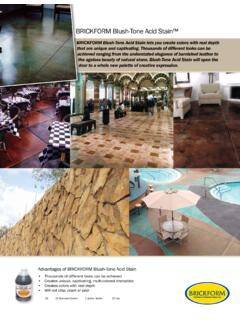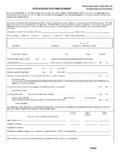Transcription of Algebra II Inverse Functions - Virginia Department of ...
1 Virginia Department of Education 2018 1 Mathematics Instructional Plan Algebra II Inverse Functions Strand: Functions Topic: Exploring Inverse Functions Primary SOL: The student will investigate and analyze linear, quadratic, absolute value, square root, cube root, rational, polynomial, exponential, and logarithmic function families algebraically and graphically. Key concepts include j) Inverse of a function. Related SOL: , g, k Materials Exploring Inverse Functions activity sheet (attached) Finding the Inverse of a Function activity sheet (attached) Graphing utility Vocabulary dependent variable, domain, independent variable, input, one-to-one function, output, range, reflection, vertical line test, line of reflection Student/Teacher Actions: What should students be doing?
2 What should teachers be doing? Time: 90 minutes Let students work in groups and complete the Exploring Inverse Functions activity sheet as a warm-up activity. Choose a completed paper from each group and post it around the room. Have students do a quick gallery walk to see the output from each group. Debrief the activity by discussing students responses to these guiding questions for the activity. How do you find the area of the square, given the length of sides? How do you find the length of sides, given the area? How are the graphs of the two Functions related with respect to the line = ?
3 Transition into defining the Inverse of a function as a set of ordered pairs in which fba ),(, then ),(ab Inverse off. Using the definition above, have students find the Inverse of the function below, where the elements of the domain are friends of Monica, and the range consists of the friends spouses. Ask whether the Inverse is a function. Domain Range Jim Amanda Will Lauren Marisa Susan Jonathan Kathy John Stephen Mathematics Instructional Plan Algebra II Virginia Department of Education 2018 2 Display the function {( 3, 27), ( 2, 8), ( 1, 1), (0, 0), (1, 1), (2, 8), (3, 27)}, and have students find the Inverse .
4 Ask whether the Inverse is a function. Then, have students find the Inverse of the function {( 3, 9), ( 2, 4), ( 1, 1), (0, 0), (1, 1), (2, 4), (3, 9)}, and again ask whether the Inverse is a function. Ask students how they can tell by looking at a function if its Inverse will also be a function. Lead them to see that Functions in which the unique inputs (values of x from the domain) correspond or map to unique outputs (values of f(x) from the range) have an Inverse that is a function. Tell them that this is referred to a one-to-one function. Discuss the vertical line test what it is and why it works.
5 Ask whether a horizontal line test would tell us anything useful. Have students graph y = (x + 2)2 + 3 and then graph the horizontal line y = 2. Ask, Where does the line intersect the parabola? Why does the horizontal line test work? Explain that a function y = f(x) is a rule that tells us to do something with the input, x. Hence, f(x) = 2x tells us to multiply the input by 2. Emphasize that the Inverse of f undoes whatever f does; therefore, f 1(x) = 12x, because 12 is the multiplicative Inverse of 2. Show students that to find the Inverse of13)( xxf, you perform the Inverse operations in reverse order.
6 That is, begin with your input, x, add 1, and then divide by 3: 1x1f3 . Demonstrate that for a function y = f(x) to have an Inverse function, f must be one-to-one: that is, for every x in the domain, there is exactly one y in its range, and likewise, each y in the range corresponds to exactly one x in the domain. The correspondence from the range of f onto the domain of f is, therefore, also a function. This function is the Inverse of f. Domain of f Range of f Apply f(x) Apply f 1(x) f 1[f(x)] = x Apply f 1(x) Apply f(x) f[f 1(x)] = x Input x f(x) x Input x f 1(x) x Mathematics Instructional Plan Algebra II Virginia Department of Education 2018 3 Ask students to determine whether each pair of Functions below is an Inverse of one another.
7 H(x) = x3 and g(x) = 3x h[g(x)] = x and g[h(x)] = x h(3x) = x and g(x3) = x 33x = x and 33x = x Students should find that they are indeed inverses. Tell them that because the pairs are inverses of one another, the composition of the two Functions is equal to x; that is, f(g(x)) = g(f(x)) = x. Have students enter Y = x3 and Y = 3x in their graphing utility and adjust the settings for the graph view so that 3 x 3 and 2 y 2. Ask what they observe about the graph. Then, have them enter Y3 = x. Have students note the symmetry of the Inverse Functions with respect to y = x. Tell them to think about reflections.
8 Use Functions of the graphing utility, such as a table, point out that if (a, b) is on the graph of f, then (b, a) is on the graph of f 1. (Note: students may need assistance with the functionalities of different graphing utilities as they explore Inverse Functions in this lesson.) Finding the Inverse : Inform students that the graph of a one-to-one function, f, and its Inverse are symmetric with respect to y = x. Therefore, we can identify f 1 by interchanging the roles of x and y: if f is defined by the equation y = f(x), then f 1 is defined by the equation x = f(y). The equation x = f(y) defines f 1 implicitly.
9 Solving for y will produce the explicit form of f 1 as y = f 1(x). Give students the function f(x) = 2x + 3, and ask whether f is one-to-one. (Yes, it is linear and increasing.) f(x) = 2x + 3 y = 2x + 3 x = 2y + 3 The variables x and y have been interchanged in the original equation. This equation defines f 1 implicitly. Solving for y, 2y + 3 = x 2y = x 3 y = 12(x 3) f 1(x) = 12(x 3) This is the explicit form. What is the domain of f ? What is the domain of f 1? What is the range of f ? What is the range of f 1? Mathematics Instructional Plan Algebra II Virginia Department of Education 2018 4 Have students graph Y1 = f(x) = 2x + 3 and its Inverse , Y2 = f 1(x) = 12 (x 3), with Y3 = x.
10 Point out the symmetry of the graphs with respect to y = x. Show several examples of finding the Inverse both algebraically and graphically using other Functions and discuss how to find the domain and range of the function and its Inverse . Then determine whether the Inverse is a function or not. ( )= ( 3)2+4, 2 ( )= 43+2 ( )= 2 +3 4 Have students complete the Activity Sheet 2: Finding the Inverse of a Function handout. The activity focuses on finding the Inverse both algebraically and graphically. Assessment Questions o On graph paper, graph the functions234)(and243)( xxgxxf. Are these Functions inverses of one another?













